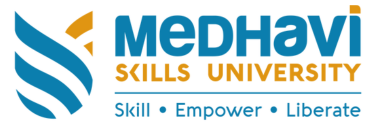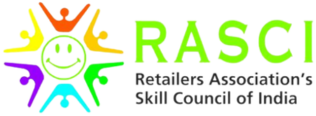The 2021 NSDUH national report includes selected estimates by race, ethnicity, and age group. It is the most comprehensive report on substance use and mental health indicators that SAMHSA has released to date. The 2024 NSDUH provides a national snapshot of behavioral health in the United States based on self-reported responses from nearly 70,000 people. In addition, the 2024 NSDUH marks the first year since 2020 in which there are at least four years of comparable data for key NSDUH outcomes, adjusting for survey design changes since 2020, enabling reporting of trends for the first time since 2019.
This report summarizes key findings from the 2019 National Survey on Drug Use and Health (NSDUH) for national indicators of substance use and mental health among people aged 12 years old or older in the civilian, noninstitutionalized population of the United States. This report provides an update on a series of topics focusing on substance use and mental health (collectively referred to as behavioral health) in the United States. SAMHSA selected specific topics and indicators in this report to represent a cross-section of the key behavioral health indicators that are assessed in SAMHSA data collections, including NSDUH.
- Funding for this initiative was made possible by cooperative agreement no. 1H79TI from SAMHSA.
- Unlike other NSDUH Annual National Reports, the 2021 report has no discussion of trends over time, because changes in survey methodology mean the indicators are not comparable to past NSDUH estimates.
- Unlike other NSDUH Annual National Reports, the 2020 report has no comparisons to the previous year, because changes in survey methodology mean the indicators are not comparable to past NSDUH estimates.
- SAMHSA selected specific topics and indicators in this report to represent a cross-section of the key behavioral health indicators that are assessed in SAMHSA data collections, including NSDUH.
- Also starting in 2014, changes were made in the sample sizes allocated to each state and to different age groups to increase the precision of national estimates, many state estimates, and estimates for older adults.
Sample Size and Response Rate
Also starting in 2014, changes were made in the sample sizes allocated to each state and to different age groups to increase the precision of national estimates, many state estimates, and estimates for older adults. States with sample increases have more precise estimates than in previous years, whereas states with smaller sample sizes have some reductions in precision. Starting in 2014, the sample size was redistributed by age group so that 25% of the sample is allocated to those aged 12–17 years, 25% to those aged 18–25, and 50% to those aged 26 and over.
US: HHS Expands Access to Methadone, Buprenorphine
The survey covers residents of households (including those living in houses, townhouses, apartments, and condominiums), people in noninstitutional group quarters (including those in shelters, boardinghouses, college dormitories, migratory work camps, and halfway houses), and civilians living on military bases. People excluded from the survey include people experiencing homelessness who do not use shelters, active military personnel, and residents of institutional group quarters such as jails, nursing homes, mental institutions, and long-term care hospitals. Funding for this initiative was made possible by cooperative agreement no. 1H79TI from SAMHSA. The views expressed in written conference materials or publications and by speakers and moderators do not necessarily reflect the official policies of the Department of Health and Human Services; nor does mention of trade names, commercial practices, or organizations imply endorsement by the U.S. The 2023 sample size was 67,679 and used multi-mode collection methods in gathering data from respondents.
This report is intended to provide a concise, reader-friendly summary of key behavioral health measures for lay and professional audiences. Read key findings from the 2020 National Survey on Drug Use and Health (NSDUH) on substance use, mental health, and treatment by age group. Unlike other NSDUH Annual National Reports, the 2020 report has no comparisons to the previous year, because changes in survey methodology mean the indicators are not comparable to past NSDUH estimates. This report provides key findings from the 2022 National Survey on Drug Use and Health (NSDUH) on substance use, mental health, and treatment among the noninstitutionalized U.S. population aged 12 or older. Summarizes key findings from the 2015 National Survey on Drug Use and Health (NSDUH) for indicators of substance use and mental health among people aged 12 years old or older in the civilian, non-institutionalized population of the United States.
Our mission is to unite people, communities and organizations to strengthen rural health in West Virginia.
The annual report presents findings on the key operational characteristics of substance use and mental health treatment facilities, use of pharmacotherapies, language assistance services, and suicide prevention assistance services. NSDUH reports on the prevalence, incidence, and patterns of illicit drug use and alcohol use among the civilian noninstitutionalized U.S. population aged 12 years and over. NSDUH also reports on substance use disorders, substance use treatment, mental health problems, and mental health care. Estimates of substance use for youth based on NSDUH are not directly comparable with estimates based on the Monitoring the Future (MTF) Study. Rates are not directly comparable across these surveys because of differences in populations covered, sample design, questionnaires, and interview setting. Furthermore, NSDUH estimates are tabulated by age, whereas MTF estimates are tabulated by grade, representing different ages as well as different populations.
SAMHSA Releases Annual National Survey on Drug Use and Health
Today, the Substance Abuse and Mental Health Services Administration (SAMHSA) released the results of the 2024 National Survey on Drug Use and Health (NSDUH), which shows how people living in United States reported their experience with mental health conditions, substance use and pursuit of treatment. This year marks the first year since 2020 in which there are at least four years of comparable data for key NSDUH outcomes to enable reporting of trends. The 2021 NSDUH national report includes selected estimates by race, ethnicity, and age group. Read key findings from the 2021 National Survey on Drug Use and Health (NSDUH) on substance use, mental health, and treatment.
- Although the sample sizes for age groups 12–17 years and 18–25 were reduced, these two groups are still considered to be oversampled because they represent about 10% and 13% of the total population, respectively.
- Weighted response rates for household screening and for interviewing were 70.5% and 64.9%, respectively, for an overall weighted response rate of 45.8% for people aged 12 years and over.
- The 2021 NSDUH national report includes selected estimates by race, ethnicity, and age group.
- The 2023 sample size was 67,679 and used multi-mode collection methods in gathering data from respondents.
Administration reaches deal with AstraZeneca on lowering drug costs
The content on this site is intended solely to inform and educate medical professionals. This site shall not be used for medical advice and is not a substitute for the advice or treatment of samhsa announces national survey on drug use and health nsduh results detailing mental illness and substance use levels in 2021 a qualified medical professional.
Weighted response rates for household screening and for interviewing were 70.5% and 64.9%, respectively, for an overall weighted response rate of 45.8% for people aged 12 years and over. Official websites use .govA .gov website belongs to an official government organization in the United States. In 2014, NSDUH introduced an independent multistage area probability sample within each state and D.C. States are the first level of stratification, and each state is then stratified into approximately equally populated state sampling regions (SSRs).
Census tracts within each SSR are then selected, followed by census block groups within census tracts, and then area segments (that is, a collection of census blocks) within census block groups. Finally, dwelling units (DUs) are selected within segments, and within each selected DU, up to two residents who are at least 12 years old are selected for the interview. Data are collected via in-person interviews conducted with a sample of individuals at their place of residence. Computer-assisted interviewing methods, including audio computer-assisted self-interviewing, are used to provide a private and confidential setting to complete the interview. A .gov website belongs to an official government organization in the United States.
Summarizes key findings from the 2017 National Survey on Drug Use and Health (NSDUH) for indicators of substance use and mental health among people aged 12 years old or older in the civilian, non-institutionalized population of the United States. SAMHSA leads public health and service delivery efforts that treat mental illness, especially serious mental illness, prevent substance abuse and addiction, and provide treatments and supports to foster recovery while ensuring access and better outcomes for all. The N-SUMHSS is a voluntary annual survey of all active substance use and mental health facilities in the United States, its territories, and D.C.
Administration reaches deal with AstraZeneca on lowering drug costs
Although the sample sizes for age groups 12–17 years and 18–25 were reduced, these two groups are still considered to be oversampled because they represent about 10% and 13% of the total population, respectively. NSDUH is representative of people aged 12 years and over in the civilian noninstitutionalized population of the United States, and in each state and the District of Columbia (D.C.). In 2019, screening was completed at 148,023 addresses, and 67,625 interviews were completed, including 16,894 interviews from adolescents aged 12–17 years and 50,731 interviews from adults aged 18 and over.
Metrics in the report cover the civilian, noninstitutionalized US population ages 12 and older. Unlike other NSDUH Annual National Reports, the 2021 report has no discussion of trends over time, because changes in survey methodology mean the indicators are not comparable to past NSDUH estimates. Today, the Substance Abuse and Mental Health Services Administration (SAMHSA) released the results of the 2024 National Survey on Drug Use and Health (NSDUH), which shows how people living in the United States reported their experiences with mental health conditions, substance use and pursuit of treatment.






